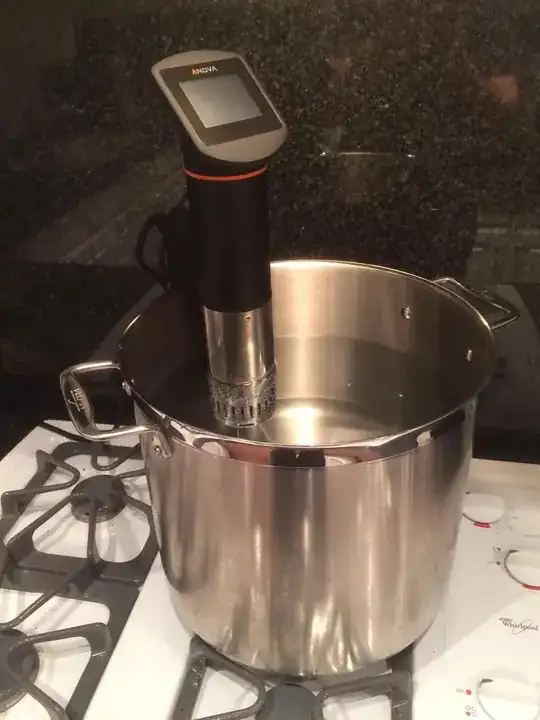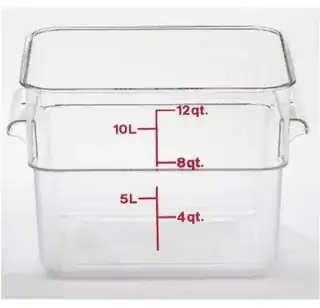My wife and I have tried a couple times to sous vide salmon fillets and they seem to keep coming out undercooked or raw in the center and I'm really not sure why. I took pretty good notes on what we did tonight and I'm hoping someone can find the flaw in my strategy.
We purchased 1 lbs. of salmon fillet from Trader Joe's. At home, we pulled it out of the refrigerator and cut the skin off of the salmon and cut it into two separate fillets. I have a FoodSaver vacuum-sealer that I used to vacuum seal the two salmon fillets into a single bag. The salmon fillets were vacuum-sealed in the same bag, but were not touching on another (they were about 3 inches apart).
I have an Anova Culinary sous vide that I used to get a water bath up to 126 degrees farenheit in a large All-Clad stainless steel pot. Image of the sous vide setup below:

Once the sous vide was up to temperature at 126 degrees Farenheit, I dropped the vacuum-sealed-bag with the two salmon fillets into the pot and started a timer. To be on the safe side, I left the salmon in the pot with the temperature at 126 Farenheit for one hour.
When I took the salmon out of the pot and opened the vacuum-sealed bag, it seemed like it was colder than I would expect. Upon cutting into the salmon, I noticed that it was still raw in the center.
After I noticed the salmon was raw, I put a thermometer in the pot and verified that the temperature was 126 degrees Farenheit, so I think the sous vide is working properly. From what I've read online, cooking for 1 hour at 126F should be more than enough. Likewise I read that vacuum-sealing fish tends to end up with overcooked fish rather than undercooked so I didn't think that was the issue.
Where did I go wrong here? Any suggestions would be greatly appreciated! Thank you!
